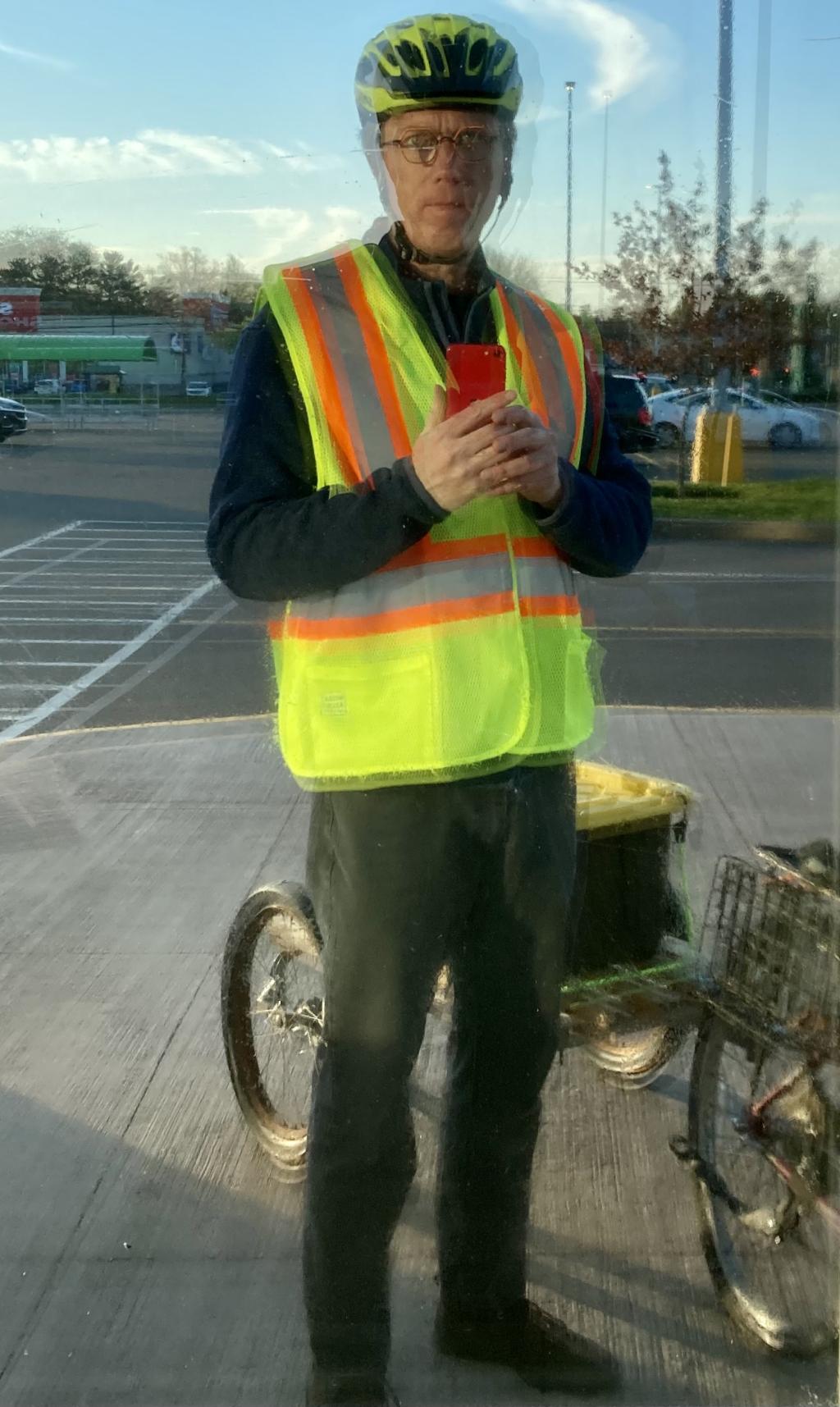Last summer, once the lockdown was over and it was permitted to hold small face to face meetings, I went to my first meeting of a non-profit board I sit on.
I arrived second to last, and found that those who’d arrived ahead of me had removed their masks. This made me uncomfortable, but so as to not be an outlier, I removed my mask too.
A few minutes after I arrived, our final board member arrived, a long-serving and much-respected board member, and he kept his mask on for the entire meeting, thus normalizing something I previously regarded as aberrant.
Needless to say, I kept my mask on for the next meeting and those that followed.
Bill is an avid cyclist in our neighbourhood. He cycles year round, and has a well-worn through the rabbit warren of downtown streets. Often he’ll stop to chat when our paths cross. And he’s always wearing a high-vis vest when he rides.
It had never occurred to me to wear a high-vis vest while bicycling, but that it made Bill so much more visible won me over. And so when I go to get groceries in the evening on my bike, now I wear one.
Like my brave board colleague, Bill normalized something that previously seemed weird.
We get wrapped up thinking that change is hard and takes money and campaigns and social media outreach; often all it takes is one person to bravely lead the way.

 I am
I am
Comments
and sometimes you need to
and sometimes you need to renormalize like I did with Ethan.
Cycling and even walking
Cycling and even walking after dark (which includes my way home from work in the late fall/winter when it gets dark early) never feels safe around cars.
I got some lights mounted on my bike, but we also have a reflective shoulder/waist-belt thing we use. I call it the Crossing-Guard gear.
I've been mocked openly for it by my 'friends'!
Your “friends” are The Anti
Your “friends” are The Anti-Normalizers, and you should ignore them, as, ultimately they place conformity over safety.
Also, I feel for you, as
Also, I feel for you, as Upper Prince is often a confusing hellscape of competing pedestrians, cyclists, dogs, cats, trucks, and cars with all manner of “drive up on until sidewalk a little” moves committed regularly. In a sensible world it would be either one-way or local-reduce l traffic-only; as it stands it’s both a local street and a sort of University Avenue bypass.
This particular example is
This particular example is tricky since it can be argued that people are normalizing cycling by normal people by cycling in normal clothes.
Do people in Copenhagen cycle or walk around in high viz? High viz feels dangerous and signals an activity that "normal people" won't do.
High viz implicitly places responsibility for road safety on the wearer, as opposed to on the road designer/builder/funder (separated paths! grade-separated or well-lit-and-traffic-calmed crossings!) or on the operator of a 1.5 tonne machine.
Unfortunately there is a really nasty chicken-and-egg problem since without safe roads, it's safer to wear high viz, but if walking/cycling is only safe in high viz, most people will consider it unsafe and drive instead, and roads will continue being built primarily for cars.
This is exactly how Trump and
This is exactly how Trump and his minions did not use their "power" to model how Americans should have acted...wearing masks, staying home, and all of the other things that "normalizing" would have helped.
A number of years ago, Dale
A number of years ago, Dale started wearing a similar vest when cycling home late after shows at the Confed Centre. Young teens, Alex & Bailey were horrified by his fashion choices. They get it now.
Thank-you, Peter, for raising
Thank-you, Peter, for raising this valuable information! It's important to wear lightly coloured clothing when we walk or cycle. Our good friend, Ian MacIntosh, was killed in Sydney, N.S. by a hit and run car when Ian was out for his daily walk on May 22nd. (www.sydneymemorialchapel.ca) Stay visible!
Add new comment